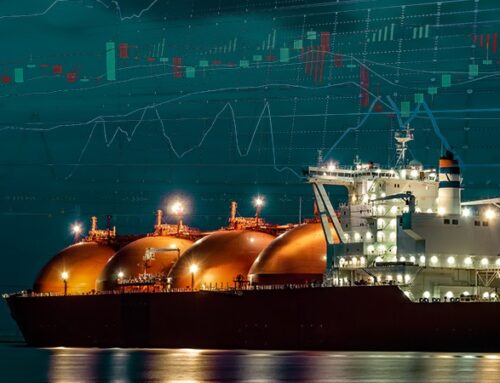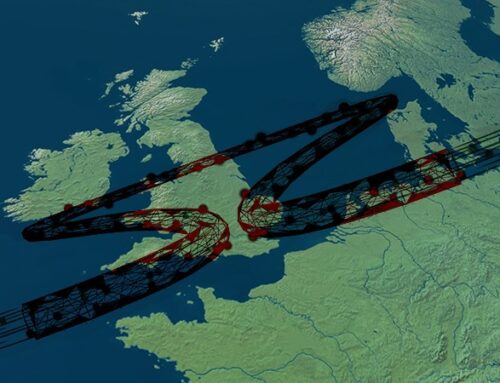The June 2019 capacity auction for delivery next winter cleared at the record low price of 77p /kW, with 129 units securing contracts covering 3.6 GW of capacity. The previous T-1 auction in February 2018 cleared at £6 /kW for 5.8 GW of capacity, which at the time led to questions about the ongoing viability of the capacity market.
Existing open-cycle gas turbines (“OCGT”) was the most successful technology in the auction, securing 23% (831 MW) of the awarded capacity. Existing Combined Heat and Power (“CHP”) secured 11% (389 MW) and existing reciprocating engines 9% (319 MW).
New reciprocating engines secured 6% (234 MW). Interconnectors were also relatively successful with existing interconnectors, including the existing Moyle and East-West connections with Ireland (345MW), securing 10% (345 MW) and new interconnectors (the NEMO link with the Belgium) contributing 19% (680 MW). No existing combined cycle has turbines (“CCGT”) won contracts, however, one new-build CCGT – Centrica’s previously mothballed King’s Lynn plant in Norfolk was successful, representing 9% (329 MW) of the awarded capacity.
Of the rest, energy from waste plants secured 7% (265 MW) of the capacity, demand-side response (“DSR”) 6% (202 MW) while storage performed poorly, securing less than 1% (22 MW) of the awarded capacity. Just the one new-build battery unit secured a contract – Centrica’s 50 MW Roosecote facility, which secured a one-year agreement at its de-rated capacity of 8.7 MW.
Unsurprisingly, existing plant represented the majority of unsuccessful units – representing over 70% of the unsuccessful auction participants. Most of the rest was proven (2%) and unproven (17%) DSR, with units from Eon, EDF, Enel X, Flexitricity, Grid Beyond, Kiwi Power, Scottish Power, Smartest Energy and UK Power Reserve dropping out as the price fell. Limejump was the most successful of the DSR providers, taking just over half of the awarded capacity.
Other unsuccessful units included SSE’s Peterhead gas plant (1,051 MW), EDF Energy’s West Burton A coal plant (4 x 433 MW), ESBI’s Corby gas plant (362 MW) and Intergen’s new Spalding gas unit (285 MW).
How significant is this result?
Overall, 9.4 GW of de-rated capacity entered the June 2019 capacity auction, more than 1 GW down on last year’s T-1 auction, possibly due to the uncertainty created by the ongoing suspension of the market. However, it is important to note that the T-1 auction is purely to provide top-up capacity with the main procurement taking place in the T-4 auctions, so the price signals will be correspondingly less significant.
The most recent T-4 auction in 2017 for the 2021/22 delivery year saw 50.4 GW being secured at a price of £8.40 /kW/year.

The capacity market suspension also meant that the auction was run much later than would usually be the case – in general, the T-1 auction takes place 9 months before the start of the delivery year, but this year’s timing in mid-June for a delivery year starting in October represents just a 3.5 month lead time.
At this point in the year, decisions on mothballing and so on will have largely been taken, meaning the scope of action by asset owners is much more limited than would usually be the case. As the capacity procured would largely have been available for the coming winter irrespective of the outcome of the auction, the auction was fairly pointless.
According to Quentin Scrimshire, head of energy storage at Kiwi Power, the capacity market is failing to meet its original purpose and is merely rewarding larger generators that would already be generating during the winter:
“The whole mind-set around the capacity market has changed from being a mechanism that would drive investment to just a handout from the government on top of your standard operational case,”
– Quentin Scrimshire, Kiwi Power
This is reflected in the low price – some large existing plant bid in at zero or near-zero prices, such as Centrica’s Kings Lynn, Killingholme and Peterborough plants, since having a capacity contract or not at this stage has very little impact on the viability of these assets over the coming winter.
However, there were other large thermal units that would have needed meaningful capacity income to ensure their future. SSE has announced that it will close its 1.5 GW Fiddler’s Ferry coal unit by 31 March next year, citing ongoing heavy losses and an inability to compete against more efficient gas and renewable generation. EDF Energy has previously stated that it would close its 2 GW Cottam coal power station, meaning that after this coming winter there will be only five coal-fired power stations left in the UK.

Some power stations that have previously secured capacity contracts may also be vulnerable, potentially running at a loss in order to meet the terms of their capacity agreements. Eggborough, which closed last year, had been running at with a load factor of just 6% (according to its 2017 accounts) – not enough to make the plant economic in the absence of a capacity contract, or with a low capacity price. Recent news about coal-free operation of the electricity system further adds to the problem. West Burton A, Corby and Brigg are all looking vulnerable.
The lack of clarity over if/when capacity payments will be made, and the likelihood of losses in the meantime, might see operators preferring to risk paying non-delivery penalties (which also could not be collected during the market suspension) rather than accept the costs of remaining open.
Will the low capacity pricing continue?
Critics are pointing to the low price of the June 2019 capacity auction to suggest that the capacity market is failing to deliver new investment, particularly in clean, flexible technologies:
“The capacity market is all about rewarding the cheapest megawatt and the cheapest possible megawatt we can build is a reciprocating engine. So storage can’t really compete in the same way, especially against existing generation,”
– Tom Edwards, senior modeller, Cornwall Insight
Analysis by Timera Energy suggests that prices in the T-4 auctions will not follow the sharp downward trajectory seen in the T-1 auction, as asset owners will need to replace income lost elsewhere with higher capacity market revenues:
- Margins earned by gas reciprocating engines have fallen significantly over the past 12-18 months;
- Transmission charging reforms will affect the economics of DSR;
- Coal economics have deteriorated as gas prices have fallen and carbon prices have risen;
- Significant reductions in battery de-rating factors and declining frequency response returns are eroding battery economics.
Providing the capacity market suspension can be lifted, the next T-4 auction will take place in January 2020, which will actually be a 3-year ahead auction for the delivery year 2022/23. This will be quickly followed in early March by the T-4 auction for 2023/24. A T-1 auction for 2021/21 is due next February.
Three auctions in the space of six weeks will provide a far clearer picture of the future of the capacity market, although whether these market forces will be enough to secure the higher prices required for investments in significant new capacity remains to be seen.






I don’t understand how a battery can get paid to provide capacity, when it could only do so for a very short period, and interconnectors themselves are not sources of energy. The Capacity Market is a lifeline for proper power stations, its rules appear to me to be bent.